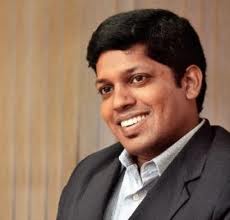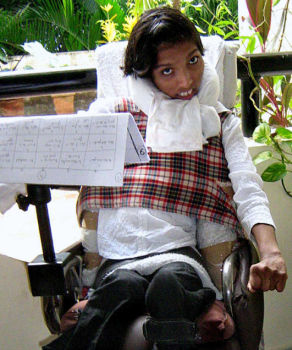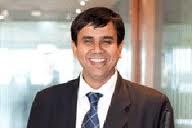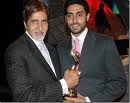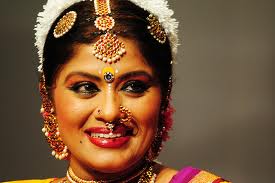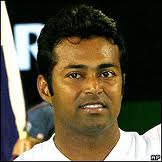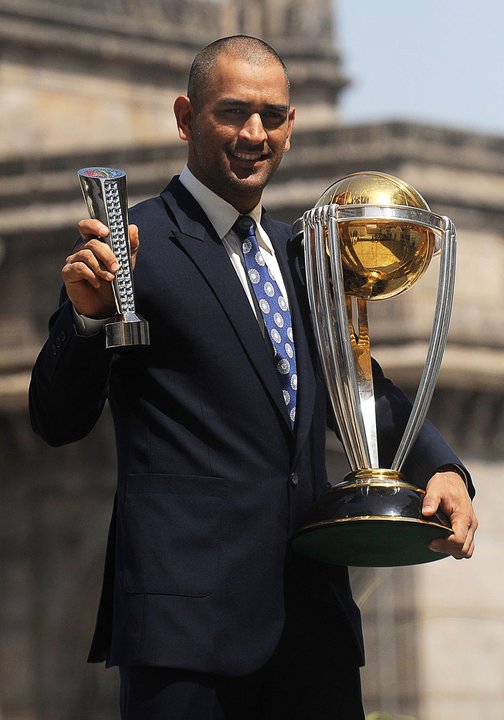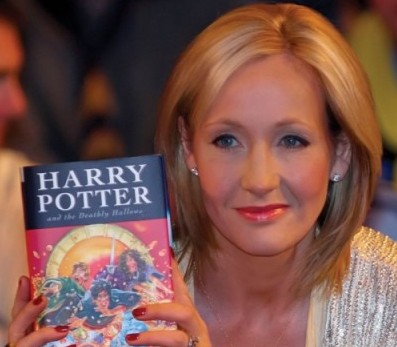Here I am – this is me — there’s nowhere else on earth I’d rather be.”
I can identify with Bryan Adam’s lyrics now, but I wasn’t exactly singing the same tune a few years ago.
I’m 30 years old and come from an upper middle-class family. The only child of my doting parents, sports and music were my passions when I was growing up – as for academics, I loathed the very sight of my school and college books. Still, I obtained my Bachelor’s Degree in History from the University of Mumbai, went on to do my MBA and today hold a cushy position in a media company. Regular story, right? With one minor difference – I dropped out of college at the age of 17 and picked up the pen once more only at the age of 24, seven years later. Here is my story.
I passed out of school in 1993, a mere one percent extra responsible for my Class I grade. My parents were reasonably well-off and only wished for me to graduate from college before starting out upon a career — any career – of my choice. Only, at the age of 15, I wasn’t ready to take my future seriously. I attended college for two years and had enough of it. So I did what most youngsters with a foolish head on their shoulders do — I dropped out of college after my HSC examinations, in 1995.
I began to look around for a job, but I didn’t give anything much of a chance before voicing my distaste and moving onto something else. I soon gave up looking altogether and began to spend my days as I chose, hanging out with friends and doing what teenagers do. Looking back, maybe I was a little disillusioned as well, because the two things I loved — sports and music — didn’t seem to be working out for me. A knee injury in my teens had put to rest my dreams of a career in cricket and as for music, if you’re under the Western influence, you can forget about a successful career here in India.
The years wore on and I did nothing with my life — 17, 18, 19 years of age. The teenage years were gone and with their departure arrived a hint of good sense. I slowly began to realise that my parents were supporting me at an age when I should have been supporting them. Going to my mother everyday for a mere 50 rupees for motorcycle fuel translated from a routine into a nightmare. She never ever said anything, but her look was enough. I became desperate to do something, anything, that would allow me the tiniest bit of financial independence.
Being a guitar player, I had always wanted to do something in music. Now, with the illusions of grandeur finally vaporised, I began to visit a music studio for advertisement, jingle and radio recordings, earning 500 bucks a day for a gruelling 8-hour shift. It was enough to sustain me then, but it’s not a very pleasant memory now. I was 20 and a cool youngster musician. Nothing could go wrong. I joined a rock band — all of us were focused on making it big, but none of us had a clue as to how we would go about establishing a reputation. We played at college fests, restaurants and corporate parties. We used to make Rs 1000 each per gig and we played two or three gigs a week.
At the age of 20, I was making between Rs 8000-10,000 a month through music. I was glad not to rely on my parents anymore, but a serious career was nowhere on the horizon. I could afford a couple of meals at a nice restaurant and buy a set of imported guitar strings once in a while, but not much byond that.
A few months down the line I was introduced through a friend to someone who owned a recording studio. He was looking for someone to handle assignments at the studio — a recording engineer. I had no sound engineering background, so I was taken aback when I was offered the job – I took it up anyway. I was hired at a salary of Rs 3500 per month, but I could continue my gigs with the band alongside. Still, I was dissatisfied. I couldn’t figure it out — I had a job, was making a little money in music and still had this yearning within me to do something worthwhile.
Then it happened, in the year 2001. I attended a school friend’s wedding and was looking forward to meeting long-lost pals from my boyhood days. That wedding changed my life and my haphazard career — if I can call it that – forever. The friends I met weren’t the ones I knew in school. They had changed a lot. Some had joined their fathers’ businesses and many were studying abroad at world-famous business schools. The internship money that they were making per month was more than my annual salary. I suddenly felt like I was a misfit. Not that they made me feel that way, but they were all educated, grown-up individuaIs — and I wasn’t.
I didn’t know what to do. I got home that night with my mind in a tizzy — was it too late for me? Was I going to be a wasted dropout, making a buck here and a buck there, all my life? When the next day dawned, I was still awake and I had arrived at a conclusion — I was going to try and salvage my academic career. Maybe I would succeed, maybe I wouldn’t. Realistically speaking, it had been seven years since I had opened a book and the thought of studying again curled my toes.
But I did it anyway. I went to Mumbai University and filled out the distance education admission forms — luckily, it was the month of May and I could enroll for the coming academic year. I didn’t know exactly what I wanted to pursue as a serious career, but I wanted to become a graduate for sure. “Graduation is a must,” as Mom always says. The two years in college before I dropped out, I was a commerce student. However, subjects like economics and accounts had never been my cup of tea and my favourite subject in school had been history. So I would pursue history.
I kept earning Rs 3500 per month at the recording studio, kept studying and kept pacifying myself — ‘It’s never too late’ became my mantra. I struggled with my books as I had not read one in seven years and now I had a job to balance alongside. But for the first time in my life, I decided I would follow through with something I had taken up. Looking back, I don’t think anyone at home expected me to go through with it all the way, but my parents were supportive nontheless.
The day of the FYBA results was the day of reckoning. When my marksheet was thrust in my hand and I saw that I had passed, albeit with a Second Class, I couldn’t believe it. “One down, two to go,” I thought to myself. With a lot of difficulty, I got through the second year and then, finally, took my final exams for BA. I became a graduate in 2004, a History Major from the University of Mumbai.
When I received my certificate, I was on cloud nine. My parents were overjoyed — it was all they had ever hoped I would accomplish academically. I started applying for jobs in the media industry, lower executive positions. After all, I was now a graduate and no longer a misfit. Or was I?
I soon realised that most company peons were graduates — and an arts background was scoffed at. But I had come so far — I wasn’t going to stop here. If there was anything I had learned from the three years I spent graduating, it was never give up. I began to explore further academic options. I had heard of executive MBA courses offered by leading b-schools for working candidates, but how was I going to get into one of these institutions? I was a graduate, but you needed to be a brilliant student to even be considered and nerve-wracking entrance tests had to be given before any school worthy of mention would accept you.
All I could think of was the 6000 rupees I was earning per month. My girlfriend made more than me and it scared me to think that after three brain-busting years of studying I was only an average candidate among millions, looking for a dream job that would never come at this rate. Finally — and I think that this was a gift straight from heaven, in appreciation of my committment to graduating – I heard of a management course offered by a prestigious institute that was tailor-made for me. You didn’t need to give an entrance exam, all you needed was to be a graduate and to have four years of work experience at a junior position.
Moreover, this was only the second year that the course was being offered — it hadn’t existed up until I was in my last year of college. A two-year post-graduation diploma in management, recognised by the country’s leading companies. The fees were hefty, but I took a loan from a bank — I wasn’t about to burden my parents with paying for something I didn’t know I could accomplish. Graduation was one thing — a management diploma from a leading b-school quite another. Accounts and economics were compulsory subjects in the first year! How was I going to do this? But I knew I had to try.
With my arts background, I had to sign up for tutorials in accounts. Through the week I would attend early morning lectures at the institute before heading off to my job, then weekends I had my tuition. I’ll never forget the first day of the course. I walked into class in jeans and a tee-shirt, only to find 50 students in formalwear, complete with jackets and ties, awaiting the professor! There was no one there without a laptop — the syllabus stipulated that you had to have one. If you didn’t own one, the institute would loan you a laptop for a fee, for the duration of your course. This certainly wasn’t Mumbai University!
“All this just for a post-graduate diploma?” I wondered. It wasn’t even a degree course. My friends later explained that many private b-schools didn’t offer degrees for the simple reason that they are not recognised by Mumbai University. But the diplomas are recognised by companies and that’s all that matters. A diploma from a reputed private b-school is equivalent to a degree from a university-recognised institute .
To say that I worked hard for my exams would be an understatement. This time around, I was determined that I wouldn’t just scrape through — I would do my best. And I did — each semester saw me pass with a Class I grade and last year I obtained my PGDBA, specialising in marketing.
Today I have a job I love with a well-established media company. My days in the studio and my music also paid off — I help prepare jingles, promos and advertisements for corporate giants. My package is Rs 12,00,000 per year. I often wonder where I would have been on the corporate ladder if I hadn’t dropped out of college, but I regret nothing. I’m earning well, my parents are happy and I’ve done what I set out to do — study hard and pursue my dream career.
Source: redif.com













